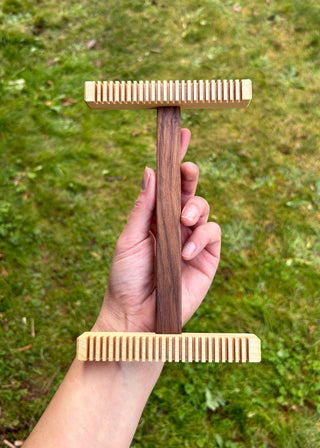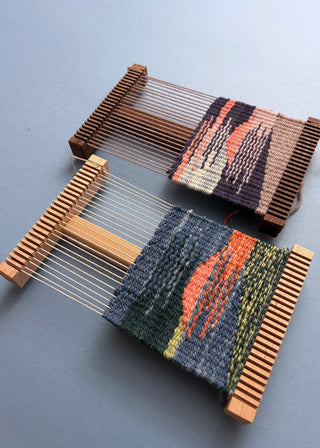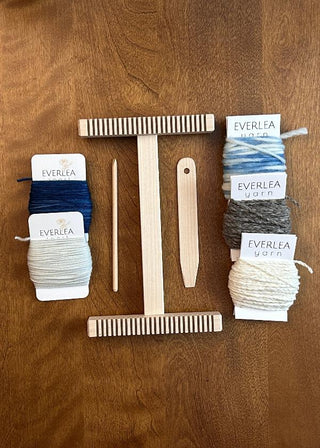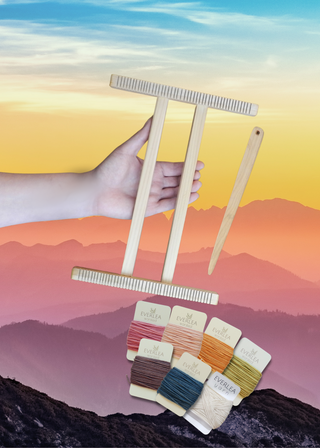I first met Anthea Mallinson in 2008 when I was a student in Capilano University’s Textile Arts program. Anthea was my tapestry weaving and dye instructor, and her passion for textile art drew me in deeply. I have since committed my art practice and livelihood to the first two things that I learned under her tutelage: natural dyeing and tapestry weaving. In January 2023, she and I met over video to chat a little bit about her history in textile arts.

“Colour was always really important to me,” Anthea recalled, as she described the 1960s and ‘70s as a time when Vancouver had many large textile supply stores, and spinning and weaving were common hobbies. As a preteen, Anthea’s mother often took her to visit the biggest of the suppliers, Handcraft House, which was also an international textile school. She was only fourteen years old when she took her first weaving class there, which included learning how to dye her own yarns for the first project. Coming from a home where her mother dyed textiles as a hobby, Anthea eagerly continued in her footsteps and, going forward, dyed her own yarns. As a senior in high school, she was selling hand-dyed, hand-woven shawls and ponchos for fifty dollars a pop. She was eager to “break the warp/weft grid” and create pictures with her weaving, so her father made her an upright loom inspired by Coast Salish looms.
At age seventeen, Anthea visited Europe and fell in love with tapestry weaving. But, upon returning to British Columbia, she found that there was more interest in giant textile sculptures—especially as commissions for Downtown Vancouver corporations—and that tapestry weaving had long fallen by the wayside, some people even claiming the artform was extinct in North America. Luckily, Anthea took a weaving workshop with Joanna Staniszkis as part of a continuing education program at the University of British Columbia. Joanna encouraged her to return to Europe to learn the art of tapestry weaving, and in 1975 Anthea did just that, traveling to Sussex, England, to study tapestry in the Tapestry Diploma program at West Dean College. There, she practiced “rigorous, detailed, disciplined tapestry with teachers all day, every day, for ten months.”
Today, Anthea Mallinson is the founder and head artist at the Dye Dept. in North Vancouver (established in 1997) and the recipient (with her team) of the 2021 Canadian Alliance of Film and Television Costume Arts and Design (CAFTCAD) Award for Excellence in Crafts (Textiles) for their work on the television show, The Chilling Adventures of Sabrina.
After more than thirty-five years spent teaching at Capilano University, Anthea is also currently readying for retirement from her position as the textile breakdown, dye, and textile art professor at the Costuming for Stage and Screen program.
Janna Vallee: Congratulations on your forthcoming retirement! University professor and small business owner—those are both high-demand jobs. I’m surprised you did both for so long.
Anthea Mallinson: Yes. I recognize now that I probably worked too hard for about ten years.
READ THE WHOLE INTERVIEW ON DIGITS & THREADS
use the code EVERLEA for a 15% discount on any Digits & Threads membership





